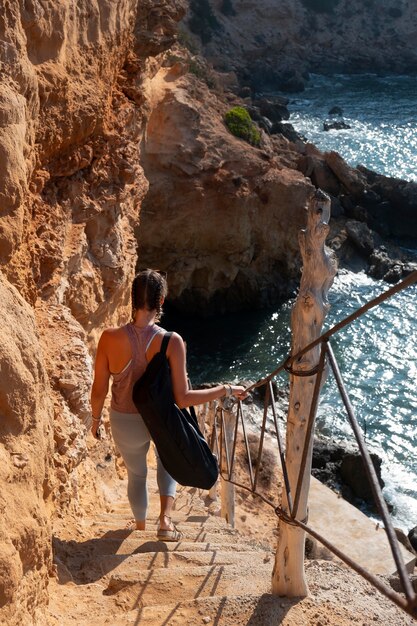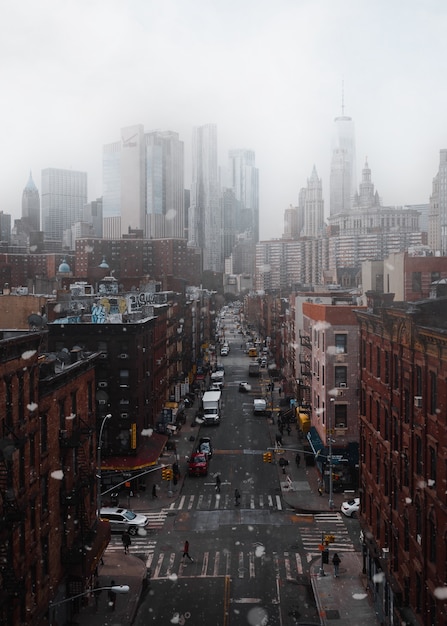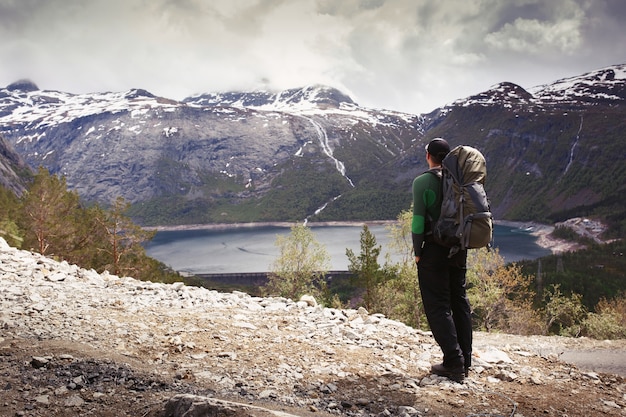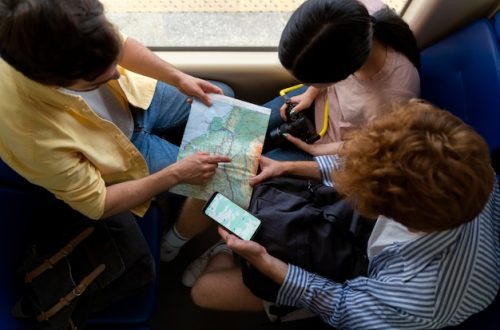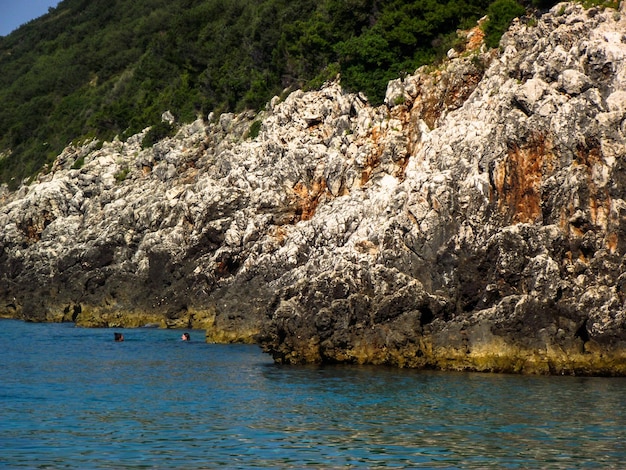
A few weeks ago, we knew little about Albania. We arrived in the capital, Tirana, after a lengthy 10-hour bus ride from Skopje, Macedonia. The first night, we didn’t explore much but felt excited to begin our 10-day road trip.
We had many choices for accommodations in Tirana, but we ended up in a quaint, affordable spot. In every big Balkan town, there are free walking tours showcasing historical sites and offering a glimpse into local life. We’ve been on these tours in Plovdiv and Sofia, Bulgaria, and find them a great way to immerse ourselves in each culture.
The tour in Tirana stood out because our guide, Gazi, shared personal stories from his life under Albania’s communist regime. He brought the tour to life by telling tales of living with daily rations and struggling for simple freedoms. Gazi’s stories offered us a deep understanding of Albania’s unique history.
After bidding farewell to our guide, we started our road trip adventure. When we picked up our rental car and drove out of Tirana, it quickly became clear what Gazi had mentioned about driving. The roads were chaotic, with pedestrians crossing randomly and cars creating additional lanes out of thin air. Motorbikes weaved through tight traffic, and horns blared constantly. The lack of a modern driving system made driving both fun and frustrating.
We left Tirana’s hectic streets to find ourselves lost in Albania’s countryside, where GPS navigation turned into more of a guessing game. At times, it directed us into castle walls or landfill canyons. By the time we reached Berat, just three hours away, we were exhausted but eager to explore.
Berat is charming, with Ottoman-era homes climbing a steep hill beside a gorge carved by a rushing river. However, closer inspection along the riverbed revealed a plethora of plastic bags, bottles, and other garbage hanging from the trees. This was a stark reminder of what Gazi had told us about Albania’s lack of waste disposal education and infrastructure.
Beyond the river’s refuse, Berat’s charming cobblestone streets and a 4th-century castle at the summit shone. This castle is still inhabited, complete with shops and daily life unfolding within its ancient walls. After a few days of exploring Berat and enjoying traditional food, we continued to Gjirokaster.
The drive to Gjirokaster was more straightforward with fewer GPS issues. We admired the picturesque scenery and quickly toured the town before heading to the Adriatic coast and settling in Saranda. Our 7th-floor apartment provided stunning views over the sea, perfect for work despite the constant distraction of the scenery.
Exploring Saranda’s oceanfront promenade, we noticed the heavy Italian influence in the restaurants and cafes, a result of the close ties described by Gazi. He also recounted times when watching Italian TV was illegal, making even the sight of a banana a rare and wondrous event.
Gazi’s stories enriched our experience of Saranda and the country as we saw how Albania transitioned from a strict communist regime to a place where people now enjoy significant modern luxuries. We were often reminded of how drastically and recently life has changed here.
Our final drive along the coastal road from Saranda to Tirana was perhaps the most beautiful we’ve ever taken. Reflecting on our trip during the drive, it was clear that while Albanians over 25 have lived through tumultuous times, there is a spirit of hope and excitement for the future.
People in Albania treated us warmly, sharing their stories, which added depth to our understanding of the country. We hope to return someday to learn more, as 10 days were far too short to fully appreciate Albania and its rich offerings.
